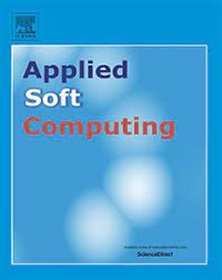USVDD: A one-class outlier detection method with imprecisely- observed data
IF 7.2
1区 计算机科学
Q1 COMPUTER SCIENCE, ARTIFICIAL INTELLIGENCE
引用次数: 0
Abstract
Detecting outliers is essential to recognizing potential faults in high-value equipment. Since such equipment typically undergoes careful maintenance to prevent breakdowns, outlier detection often involves a one-class classification problem. Current advanced methods frequently face difficulties in managing the complexities of one-class observations, particularly when dealing with uncertain and imprecise monitoring data. This study proposes a novel approach to fault detection, called uncertain support vector data description (USVDD), in contexts involving one-class uncertain data. Drawing on uncertainty theory, USVDD conceptualizes imprecise observations as uncertain variables. By integrating novel hyperparameters, particularly belief degrees , the method effectively addresses and quantifies data uncertainty, enhancing its ability to handle complex, uncertain datasets. Testing on 12 real-world datasets highlights that the proposed USVDD method outperforms alternative methods by achieving the highest balanced F1-scores on 10 datasets. Additionally, it demonstrates remarkable efficiency, completing computations on high-dimensional datasets up to 60 times faster than competing methods on the same hardware setup. USVDD excels in managing observational data influenced by aleatory uncertainty, making it a reliable solution for one-class diagnostic modeling in situations with scarce fault samples.
求助全文
约1分钟内获得全文
求助全文
来源期刊

Applied Soft Computing
工程技术-计算机:跨学科应用
CiteScore
15.80
自引率
6.90%
发文量
874
审稿时长
10.9 months
期刊介绍:
Applied Soft Computing is an international journal promoting an integrated view of soft computing to solve real life problems.The focus is to publish the highest quality research in application and convergence of the areas of Fuzzy Logic, Neural Networks, Evolutionary Computing, Rough Sets and other similar techniques to address real world complexities.
Applied Soft Computing is a rolling publication: articles are published as soon as the editor-in-chief has accepted them. Therefore, the web site will continuously be updated with new articles and the publication time will be short.
 求助内容:
求助内容: 应助结果提醒方式:
应助结果提醒方式:


